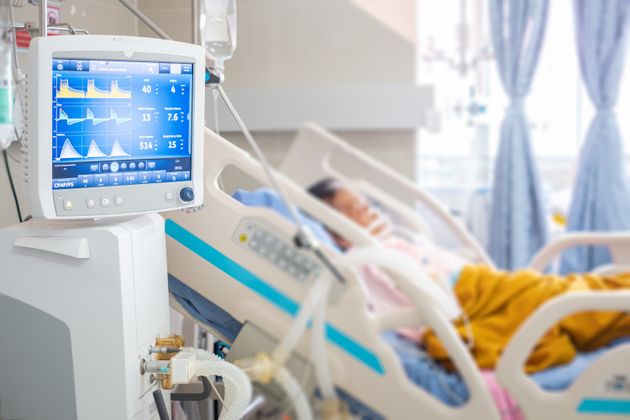
The number of coronavirus patients on ventilators is already nearing the figure recorded at the peak of the pandemic at a handful of NHS trusts in England, analysis by HuffPost UK has revealed.
Examination of figures published by NHS England on Thursday shows there are four trusts where the number of mechanical ventilation beds occupied by Covid-19 patients is approaching the highest figure recorded between April and the start of October.
It does not mean these trusts are close to being overwhelmed – but it’s an indicator of how the second wave of the virus is developing in England.
Blackpool Teaching Hospitals NHS Foundation Trust and Liverpool University Hospitals NHS Foundation Trust were among those where the number of mechanical ventilation beds occupied by coronavirus patients is at 75% or more of the highest recorded figure.
Warrington and Halton Hospitals NHS Trust and East Lancashire Hospitals NHS Trust also made the list.
NHS England said it was vital the public did everything they could to try and control the spread of the virus.
Blackpool Teaching Hospitals NHS Foundation Trust
Peak number of ventilator beds occupied with Covid patients during first wave: 14 (April 14)
Number of ventilator beds occupied October 20: 12 (85.6% of peak)
Liverpool University Hospitals NHS Foundation Trust
Peak number of ventilator beds occupied with Covid patients during first wave: 27 (April 5)
Number of ventilator beds occupied October 20: 23 (85% of peak)
Warrington and Halton Hospitals NHS Trust
Peak number of ventilator beds occupied with Covid patients during first wave: 21 (April 5)
Number of ventilator beds occupied October 20: 17 (80.9% of peak)
East Lancashire Hospitals NHS Trust
Peak number of ventilator beds occupied with Covid patients during first wave: 25 (April 7)
Number of ventilator beds occupied October 20: 19 (76% of peak)
It comes as England faces a second wave of Covid-19, with swathes of the country under additional restrictions in a bid to get the virus under control.
On Tuesday, 26,688 new cases of coronavirus were recorded in the UK – the highest figure since records began. Almost 23,000 of these cases were in England.
According to government data, there were 601 coronavirus patients in England in mechanical ventilation beds as of October 23.
Kevin McGee, chief executive of the East Lancashire Hospital, said that the “huge rise” in infection rates across the north-west was having an impact on the trust and its ICU.
But he added: “Our critical care capacity is fluid and we have the flexibility to expand and contract as required, dependent upon the acuity of our patients.
“We have robust plans in place which we have escalated to ensure we can accommodate the growing numbers and also to prepare effectively for the coming winter months.”
McGee was quick to emphasise the importance of the public following coronavirus guidance, including social distancing, washing their hands, covering their faces and making space.
“It is absolutely essential that everybody reading this understands the seriousness of the situation,” he said.
In a separate response on behalf of hospitals across Lancashire and South Cumbria – including Blackpool – McGee emphasised that while NHS services are “under a huge amount of pressure”, they remain open.
“As a result of the increases in Covid admissions in our hospitals, it is important that we are continuing to provide services for our patients for treatments such as cancer and routine appointments and patient safety remains of the highest importance,” he said.
“It’s important that anyone with concerns continue to come forward for help and treatment.”
In a statement, a spokesperson for NHS England told HuffPost UK: “Coronavirus cases and hospital admissions are rising and so it is vital everyone does what they can to control the virus, particularly by following government guidelines.
“Social distancing is the first line of defence, followed by the test and trace programme, but if infection still then spreads, the NHS has no choice but to activate local and regional escalation plans.”

